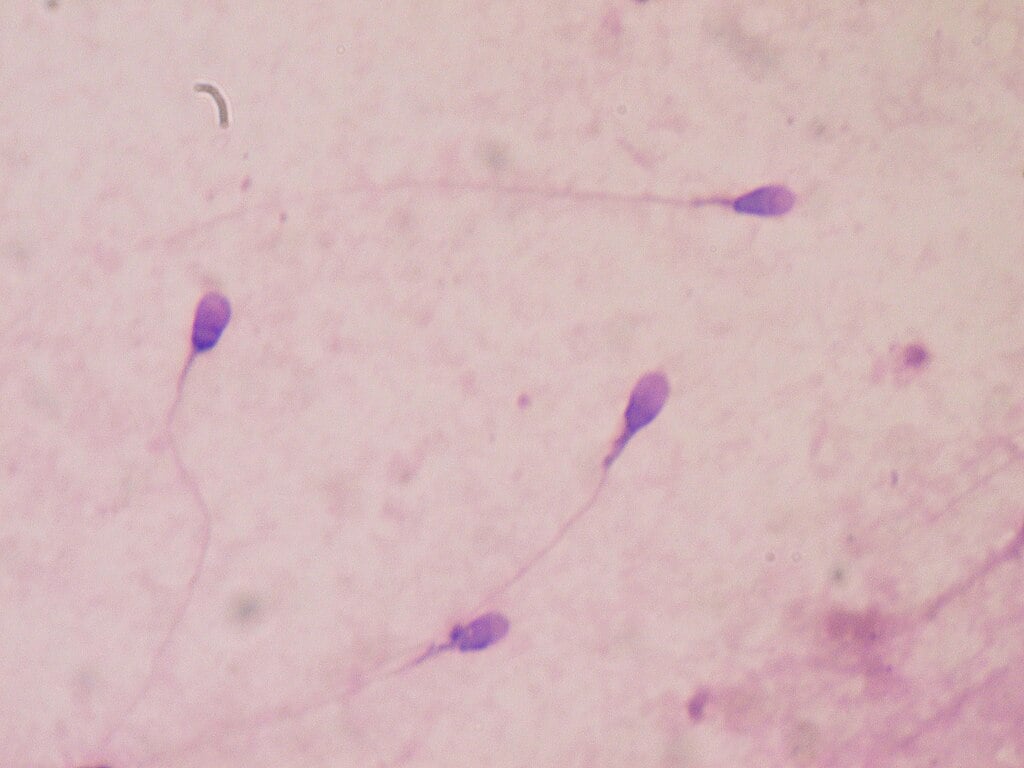
A new study has revealed that human sperm cells may not behave according to one of the most fundamental laws of physics: Newton’s Third Law of Motion.
Research findings published in the journal PRX Life come from a team led by Kenta Ishimoto at Kyoto University. The scientists explored how sperm move through thick, gel-like fluids inside the human body.
Despite expectations from classical mechanics, sperm continue to efficiently swim through these dense environments—more like honey than water—where most objects would quickly slow down or stop.
A law-defying way to swim
Newton’s Third Law states that every action has an equal and opposite reaction. For swimmers in viscous fluids, this means every push forward should meet with a matching force pushing back. That pushback normally reduces speed or halts movement altogether. But sperm don’t seem to follow this rule.
Instead, their tails—called flagella—bend and move in a way that sidesteps the typical resistance. Rather than using symmetrical strokes that push against the fluid and trigger a direct counterforce, sperm create a one-sided wave motion. This allows them to propel without experiencing the expected level of drag.

Odd elasticity offers a possible explanation
To explain this surprising behavior, the researchers introduced the concept of “odd elasticity.” The term describes how certain microscopic structures, like sperm tails and the flagella of single-celled algae, deform in a way that avoids the traditional feedback from the fluid around them.
🖖Human sperm breaks Newton’s third law. 😎
This law states, “For every action, there is an equal and opposite reaction.”
However, for sperm, this is not the case.We’ve always been told that the tail allows sperm cells to move forward.
But…they do so in a non-reciprocal… pic.twitter.com/JDfRpnYZFf
— Wonderful facts (@Wonderfulf9688) November 20, 2023
These motions are non-reciprocal, meaning the movement is not simply reversed by the environment, as Newtonian physics would predict. When the flagellum bends in this specific pattern, it interacts with the fluid differently. It allows the cell to generate propulsion without triggering a standard opposing force.
The team used mathematical models and simulations to support their findings, noting that other microorganisms—such as Chlamydomonas algae—may use similar techniques to move efficiently in thick surroundings.
New possibilities for robotics and soft matter physics
The discovery carries potential implications beyond biology. Understanding how these tiny swimmers defy physical norms could inspire new designs in microrobotics. Engineers could apply these principles to develop miniature machines capable of navigating through complex environments, such as the human body or deep-sea sediments.
This research opens new doors in soft matter physics and bioengineering. The researchers are learning how living systems find clever ways to move when standard physics says they shouldn’t.
The study also raises broader questions about how physical laws apply to life at the microscopic scale. As researchers continue to explore the mechanics of movement in biological systems, the line between physics and biology appears to grow more flexible.


